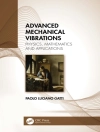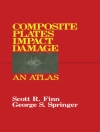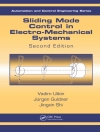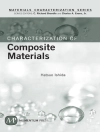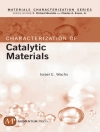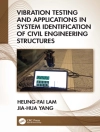Over the last 15 years, the application of innovative steel concepts in the automotive industry has increased steadily. Numerical simulation technology of hot forming of high-strength steel allows engineers to modify the formability of hot forming steel metals and to optimize die design schemes. Theories, Methods and Numerical Technology of Sheet Metal Cold and Hot Forming focuses on hot and cold forming theories, numerical methods, relative simulation and experiment techniques for high-strength steel forming and die design in the automobile industry.
Theories, Methods and Numerical Technology of Sheet Metal Cold and Hot Forming introduces the general theories of cold forming, then expands upon advanced hot forming theories and simulation methods, including:
the forming process,
constitutive equations,
hot boundary constraint treatment, and
hot forming equipment and experiments.
Various calculation methods of cold and hot forming, based on the authors’ experience in commercial CAE software for sheet metal forming, are provided, as well as a discussion of key issues, such as hot formability with quenching process, die design and cooling channel design in die, and formability experiments.
Theories, Methods and Numerical Technology of Sheet Metal Cold and Hot Forming will enable readers to develop an advanced knowledge of hot forming, as well as to apply hot forming theories, calculation methods and key techniques to direct their die design. It is therefore a useful reference for students and researchers, as well as automotive engineers.
Table of Content
1.The introduction of sheet metal forming technology.- 2. The basics and equipments of sheet metal forming.- 3. Hot forming process.- 4. The basic mechanical properties and experimental verification for hot forming steel.- 5. The basic theory and constitutive equation of high strength steel for hot forming.- 6. Microscopic constitutive models of single crystal and polycrystal.- 7. Hot forming simulation algorithms of high strength steels.- 8. Numerical Simulation of high strength steel plate?s hot forming.- 9.Features of hot forming graded composite material and its experiment and simulation.- 10. Simulation and optimization on service performance of hot forming parts.
About the author
Ping Hu is the dean of the School of Automotive Engineering in Dalian University of Technology (DUT), China, and a professor in the State Key Lab of Structural Analysis of Industrial Equipment in Dalian, China. Ping Hu is also the founder and CEO of King Mesh Company Ltd. He earned his BS, MS and Ph D degrees in mathematical mechanics and computing mechanics at Ji Lin University of Technology (JUT), and completed his postdoctoral research in Kobe University, Japan. In the past, Ping Hu has been the deputy dean of the Graduate School at Jilin University (JLU), professor in the State Key Lab of Automobile Dynamic Simulation located at JLU, director of the Institute of Automobile Body and Die Engineering, and the CEO of Changchun King Mesh Auto Eng. Ltd.
Ning Ma is a technical expert in Zhejiang Geely Automobile Research Institute CO. LTD, and a researcher in the School of Automotive Engineering at Dalian University of Technology. He earned his Ph D degrees in mechanical engineering at DUT and completed visiting doctoral research in the Department of Mechanical Engineering, Northwestern University (NU), USA. In the past, Ning Ma worked as a senior project assistant in Advanced Materials Processing Laboratory, NU, USA, project manager, manufacturing and design engineer in Guangzhou Automobile Group Co., Ltd. And SAIC Motor Corporation Limited, China.
Li-zhong Liu and Yi-guo Zhu also work in the School of Automotive Engineering at Dalian University of Technology.


